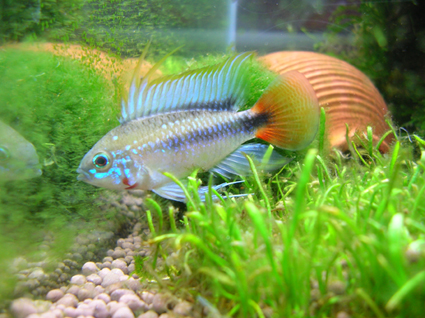Apistogramma sp "Rio Mamore" or A.maciliensis?

Picture courtesy of chuencp39 from AquaticQuotient.com
From what I read in Mike's old posting in Krib, A.maciliensis has a yellow patch above the lateral line and in the picture, there seemed to be the yellow patch. So is this A.sp "Rio Marmore" or A.maciliensis?
Or are they the same fish?

Picture courtesy of chuencp39 from AquaticQuotient.com
From what I read in Mike's old posting in Krib, A.maciliensis has a yellow patch above the lateral line and in the picture, there seemed to be the yellow patch. So is this A.sp "Rio Marmore" or A.maciliensis?
Or are they the same fish?